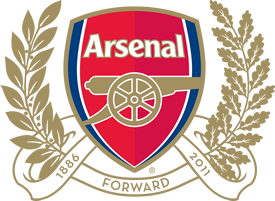2010 FIFA WORLD CUP
2010 FIFA World Cup
The 2010 FIFA World Cup was the 19th FIFA World Cup, the world championship for men's national association football teams. It took place in South Africa from 11 June to 11 July 2010. The bidding process for hosting the tournament finals was open only to African nations; in 2004, the international football federation, FIFA, selected South Africa over Egypt and Morocco to become the first African nation to host the finals.The matches were played in ten stadiums in nine host cities around the country, with the final played at the Soccer City stadium in South Africa's largest city, Johannesburg. Thirty-two teams were selected for participation via a worldwide qualification tournament that began in August 2007. In the first round of the tournament finals, the teams competed in round-robin groups of four teams for points, with the top two teams in each group proceeding. These sixteen teams advanced to the knockout stage, where three rounds of play decided which teams would participate in the final.
In the final, Spain, the European champions, defeated third-time finalists the Netherlands 1–0 after extra time, with Andrés Iniesta's goal in the 116th minute giving Spain their first world title, becoming the eighth nation to win the tournament, and the first European nation to win the tournament outside its home continent. Host nation South Africa, 2006 world champions Italy and 2006 runners-up France were all eliminated in the first round of the tournament. It was the first time that the hosts were eliminated in the first round.
List of qualified teams
The following 32 teams, shown with final pre-tournament rankings, qualified for the final tournament.
AFC (4)
CAF (6)
|
CONCACAF (3)
CONMEBOL (5)
OFC (1)
|
UEFA (13)
|
Prize money
The total prize money on offer for the tournament was confirmed by FIFA as US$420 million (including payments of US$40 million to domestic clubs), a 60 percent increase on the 2006 tournament. Before the tournament, each of the 32 entrants received US$1 million for preparation costs. Once at the tournament, the prize money was distributed as follows:- US$8 million – To each team exiting after the group stage (16 teams) ($8.53 million in 2012 US dollars)
- US$9 million – To each team exiting after the round of 16 (8 teams) ($9.59 million in 2012 US dollars)
- US$14 million – To each team exiting after the quarter-finals (4 teams) ($14.92 million in 2012 US dollars)
- US$18 million – Fourth placed team ($19.18 million in 2012 US dollars)
- US$20 million – Third placed team ($21.32 million in 2012 US dollars)
- US$24 million – Runner up ($25.58 million in 2012 US dollars)
- US$30 million – Winner ($31.97 million in 2012 US dollars)
Johannesburg Cape
Town Durban Johannesburg Soccer City Cape Town Stadium Moses Mabhida Stadium Ellis Park Stadium
2010 FIFA World Cup (South Africa)
Port Elizabeth
Loftus Versfeld Stadium Nelson Mandela Bay Stadium 25°45′12″S
28°13′22″E 33°56′16″S
25°35′56″E Capacity:
42,858 Capacity: 42,486 Polokwane Nelspruit Bloemfontein Rustenburg
23°55′29″S
29°28′08″E 25°27′42″S
30°55′47″E 29°07′02.25″S
26°12′31.85″E
25°34′43″S
27°09′39″E Peter Mokaba Stadium Mbombela Stadium Free State Stadium Royal Bafokeng Stadium Capacity: 41,733 Capacity: 40,929 Capacity: 40,911
Capacity: 38,646
Match
ball
Main article: Adidas Jabulani
Adidas Jo'bulani, the final-match
ball
The match ball for the 2010 World Cup, manufactured by Adidas, is named the Jabulani,
which means "bringing joy to everyone" in Zulu.
It is the eleventh World Cup match ball made by the German sports equipment
maker; it features eleven colours, representing each player of a team on the
pitch and the eleven official languages
of South Africa.
A special match ball with gold panels, called the Jo'bulani, was used at
the final in Johannesburg.
The ball is constructed using a new
design, consisting of eight thermally bonded, three-dimensional panels. These
are spherically moulded from ethylene-vinyl acetate (EVA) and thermoplastic
polyurethanes (TPU). The surface of the ball is
textured with grooves, a technology developed by Adidas called GripnGroove that is intended to improve the ball's
aerodynamics. The design has received considerable academic input, being
developed in partnership with researchers from Loughborough University, United Kingdom.
The balls are made in China, using latex bladders made in India, thermoplastic
polyurethane-elastomer from Taiwan, ethylene vinyl acetate, isotropic
polyester/cotton fabric, and glue and ink from China.
Some football stars have complained
about the new ball, arguing that its movements are difficult to predict.
Brazilian goalie Júlio
César compared it to a
"supermarket" ball that favored strikers and worked against
goalkeepers.
Argentinian coach Diego Maradona said "We won't see any long passes in this World Cup
because the ball doesn't fly straight."However, a number of Adidas-sponsored
players have responded favourably to the ball.

Comments
Post a Comment